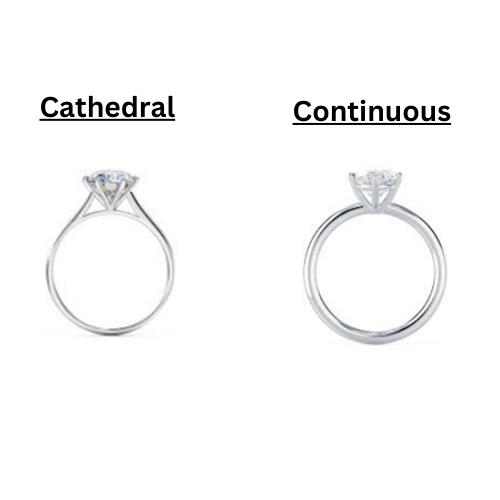Traditional wedding bands can be flat, described as a “pipe” band, or rounded, comfort fit.
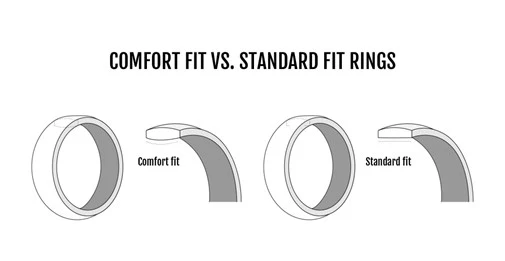
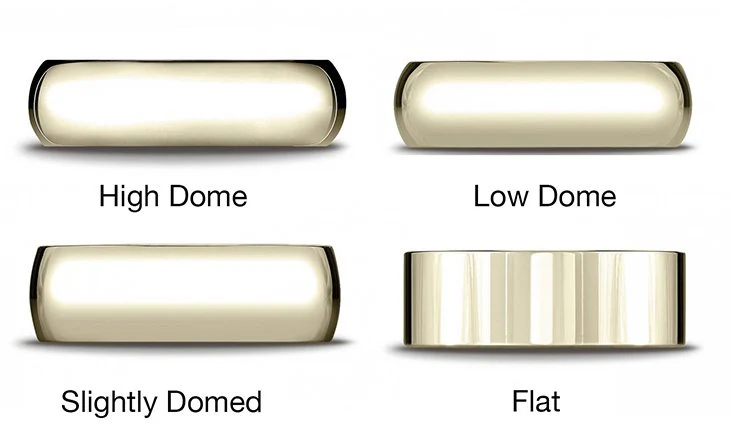
Anatomy of a ring
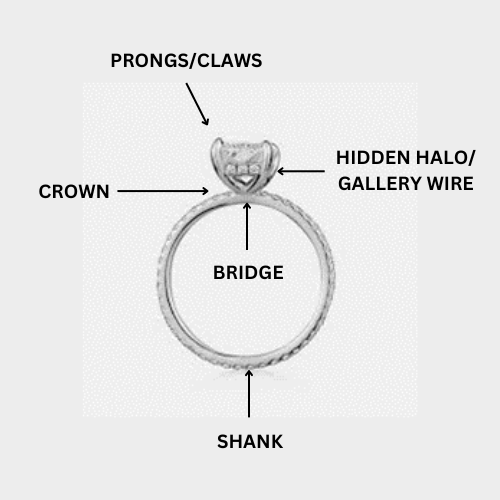
Diamond settings
– Bezel setting – the stone is surrounded entirely by an edge or frame of gold/platinum
– Channel setting – diamonds are set in the ring and are held in by a channel of gold/platinum. This style of setting (along with bezel set described above) is often regarded as one of the more durable and there are no claws to catch.
– Shared prong setting – the diamond shares two prongs with the adjacent diamond instead of having its own individual 4 prongs, which is typically the case with prong settings.
– Flush setting – the stones are set into the surface with a clean edge around the stone. They well protected and are not protruding but rather become level with the gold/platinum
-Pave set – the stone is set slightly into the surface and the gold or platinum is pushed into small beads or claws around to secure the stone. This setting features smaller claws but durability is enhanced because the claws and stone are generally below the surface of a protective edge which is created in this setting technique.
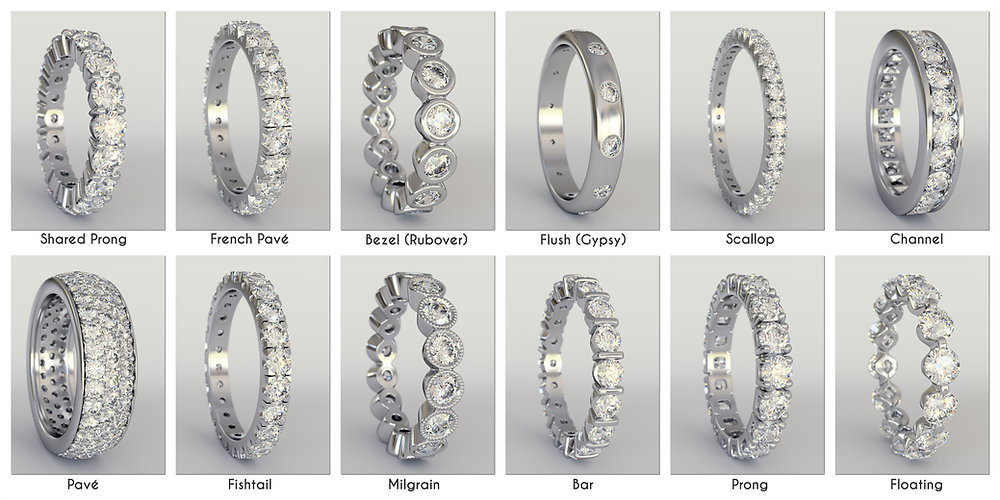
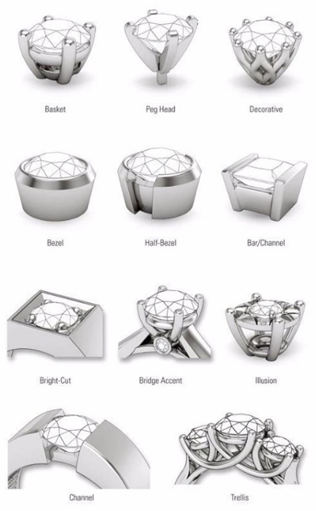
Cathedral vs continuous/classic band:
Cathedral settings have the shoulders raised at the top of each side and meet at the side of the diamond. Typically, there are openings or “windows” on both sides of the centre stone.
Continuous settings have the band going 360 degrees around and the diamond setting is on top.
Continuous settings feature the diamond which tends to stand out, while cathedral settings offer protection and a more integral look.
